Introduction
This is an abridged description of a roundtrip through the Provence in southern France commencing in May 1990. The intention is to give a firsthand personal experience of how we, Brigitte and I, did get to and through the country. Despite the fact that I did not book anything in advance at all and that we covered more than 2,000km by car during the 18 days, it was no problem getting any means of accommodation on the same day.
At the time of writing all this, more than 18 years have passed and I am trying to recall the names of the places we visited as best as I can. But I definitely remember the outstanding beauty of the countryside and the many awe inspiring historical sites. Yes, this province was called Provence because it became the first province of the Roman Empire beyond the alps by the end of the second century BC.
Now you may follow me while I relive this journey from the past in a double sense. But there is no sense in naming any accommodations and restaurants, because they may not exist anymore and I have forgotten them all, including the prices, anyway.
From Cologne to the Provence
First night we stayed in Montbéliard, close to the German-Swiss border. From there we went next day down into the Rhône Valley until we reached Orange, but not before we have taken a detour into the Ardéche Valley.
Ardéche
This is one of the most imposing countrysides in France with its famous cañon, the Gorge de l'Ardéche. Though, it does not belong to the province of the Provence yet. Even more famous is the Pont-d'Arc, a naturally formed rocky bridge over the river Ardéche.
Remark: The photos on the right side may not be correctly adjusted if you use Mozilla Firefox or Chrome. I propose to use the Explorer of Microsoft instead.
Click the small picture to get it enlarged

| Ardéche Pont-d'Arc. C'est juste?
|
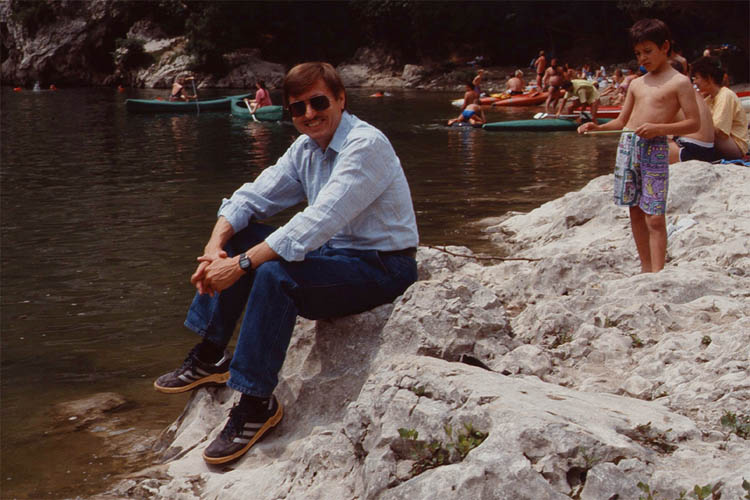
| That's me - c'est moi
|
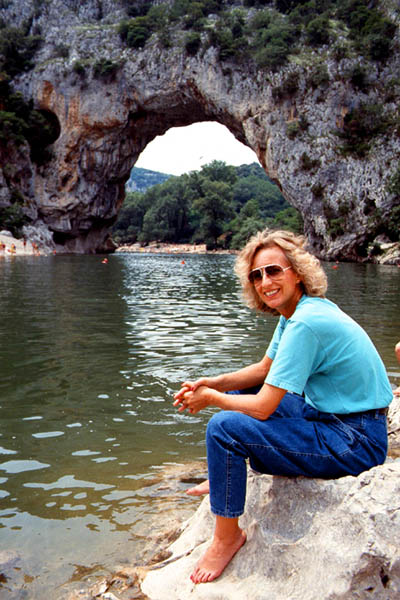
| That's Brigitte - ell'est mon ami
|

| Vallée d'Ardéche - quelle belle vue
|
One of the best attractions is kayaking on the river. The area is dotted with 'Rent a Canoe' stations. During the summer holiday season there are a couple of thousand boats plying the water. But it was not so crowded this time in May.
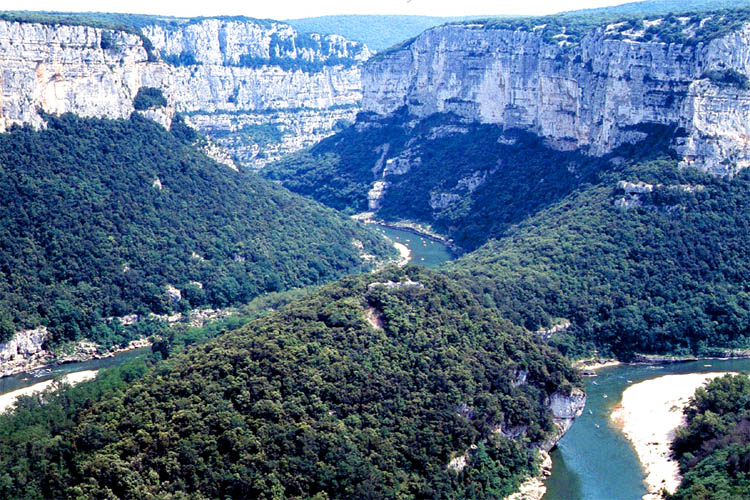
| Isn't that a gorgeous view
|
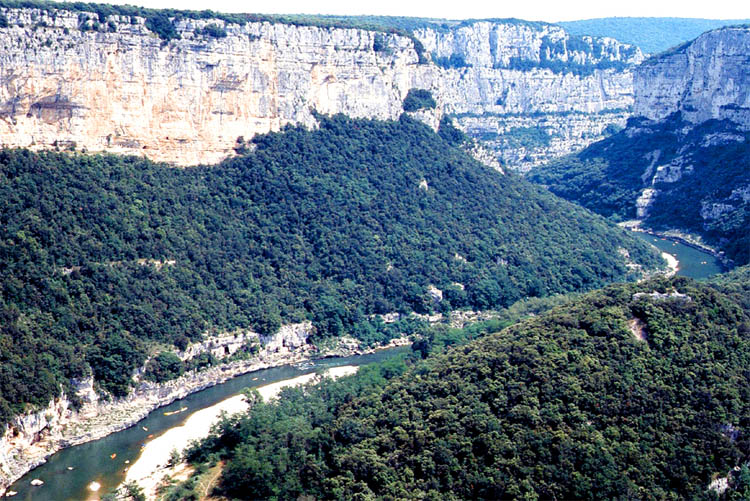
| into the Gorge de l'Ardéche
|
Orange
Orange is the first town we reach in the Provence.
It has one of the largest arches built by the Romans with a height of 19 meters. It shows fine sculptures depicting the victories of Julius Caesar.
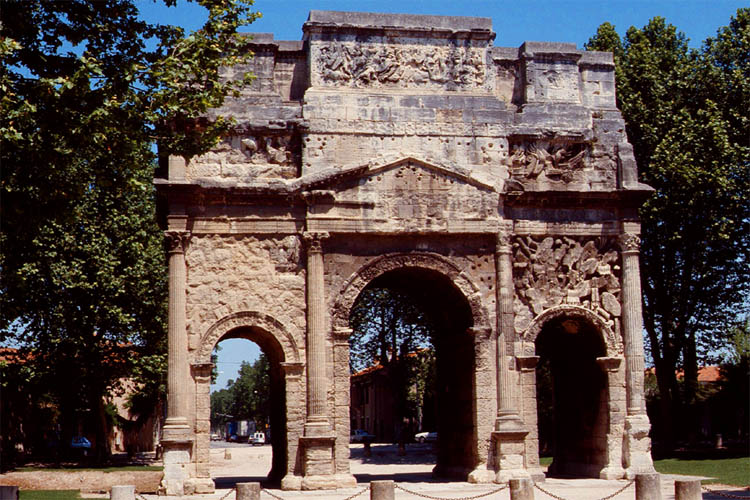
| La porte d'Orange
|
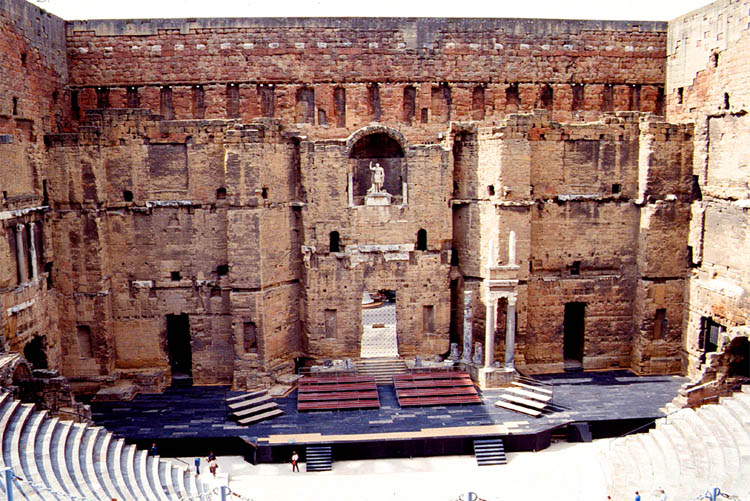
| L'amphitheatre d'Orange
|
The Roman theatre was built by the Romans probably in the beginning of the first century AD during the reign of emperor Augustus. His imposing statue in the central niche is almost four meters high. Imagine, all this was built without mortar and is still standing.
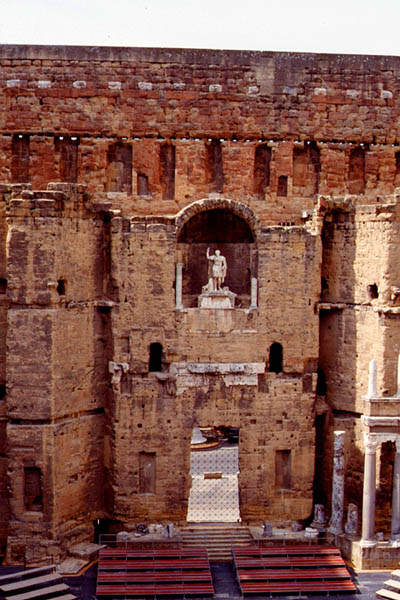
| That's Augustus
|
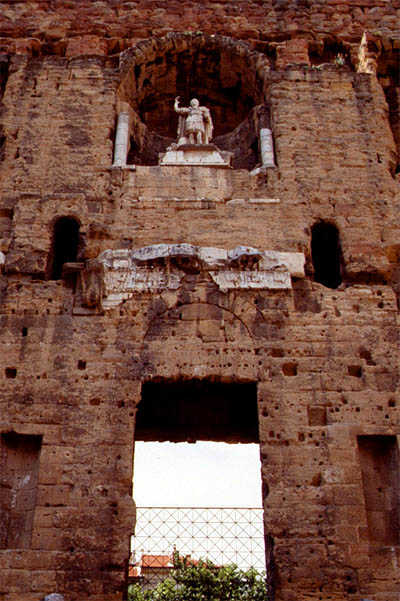
| Hail Augustus
|
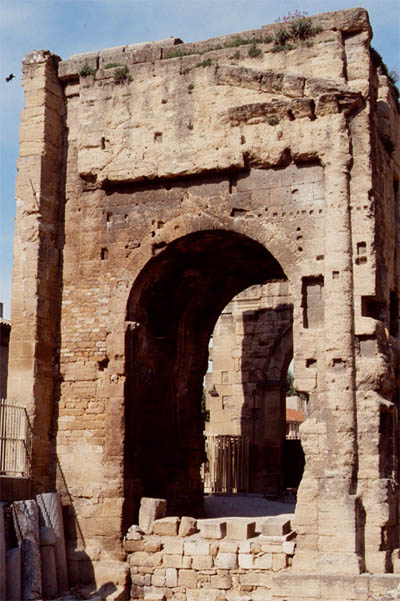
| Fantastic architecture of the Romans
|

| Waiting for the next performance?
|
Vaison-la-Romaine
Around 50km up to the north-east of Orange you'll find another old Roman settlement: Vaison-la-Romaine. Get an impression of the comfortable way of life of the Romans by just looking at the following pictures.
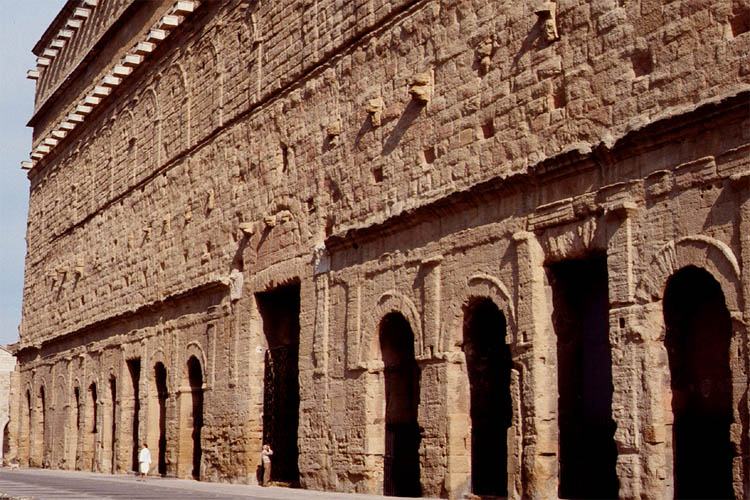
| From old Orange to the countryside
|
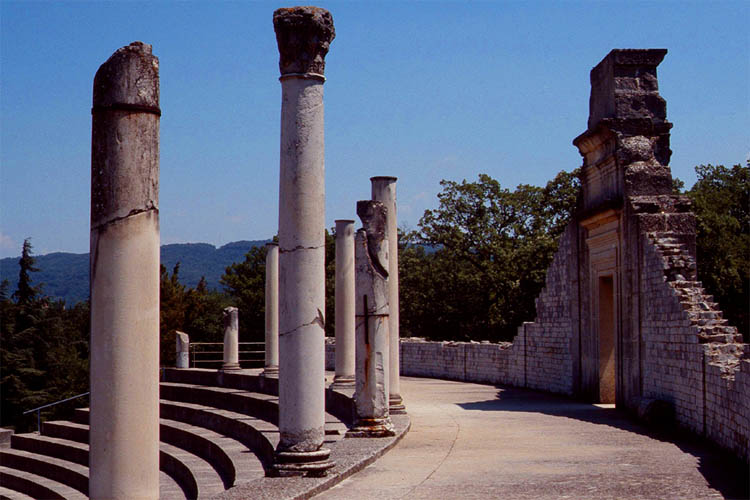
| Where also the Romans did reside
|
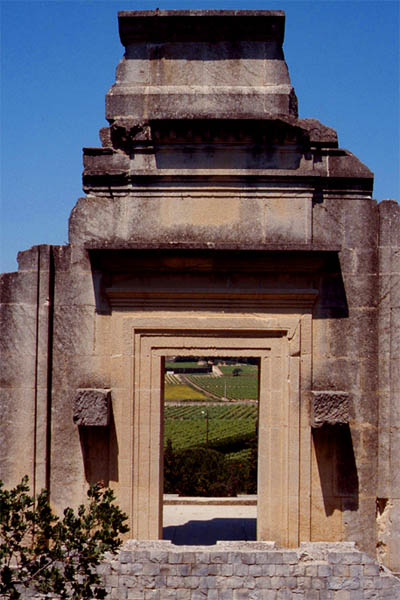
| Where many of the beautiful gates still stand
|

| And the boy is still intact but for one hand
|
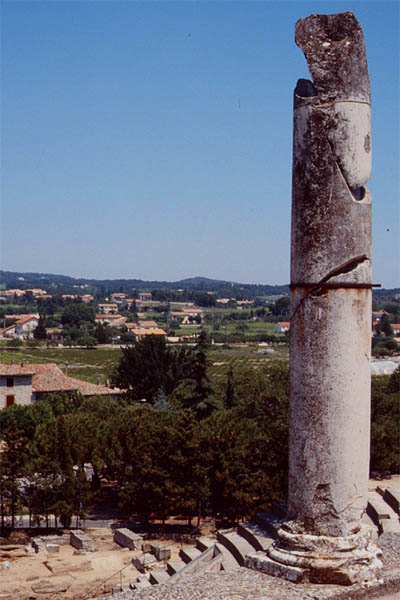
| Many columns have been re-erected
|
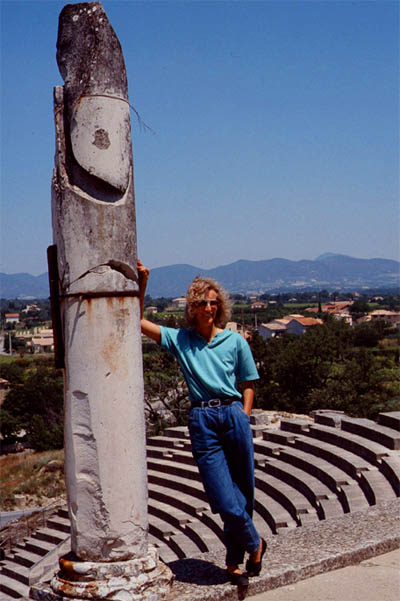
| Don't push too hard, you may crash it
|
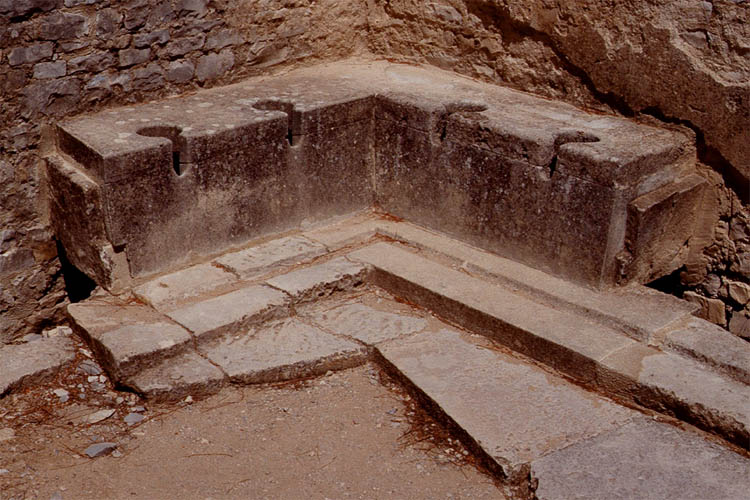
| Sit on one of the toilets and have a chat
|

| It's not so comfortable using this jar instead
|
Scenic Tour to Mont Ventoux
Leaving the town of Vaison-la-Romaine was not easy. I parked the previous evening on the empty market place and almost couldn't get out because of all the surrounded market stalls next morning. But then the drive through the beautiful countryside was a relaxing exercise.
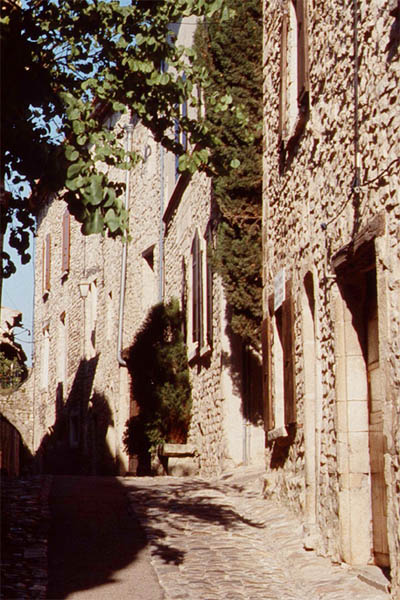
| Idyllic villages
|
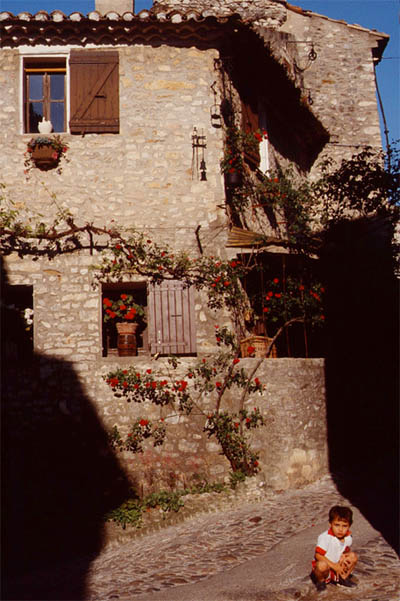
| in the Provence
|
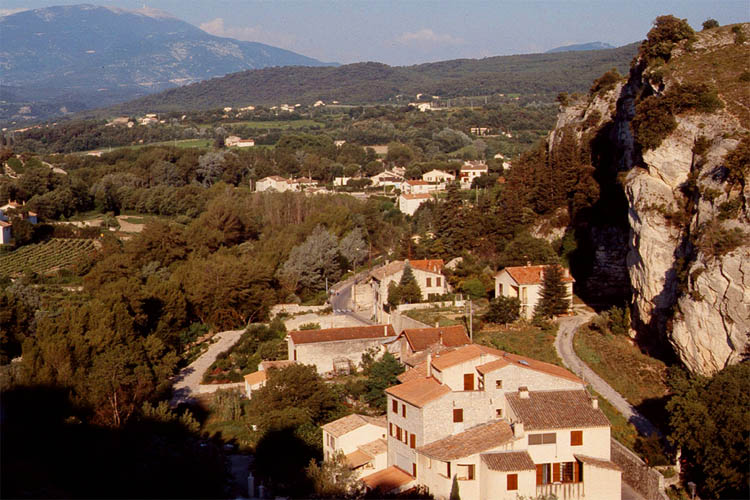
| A beautiful countryside
|
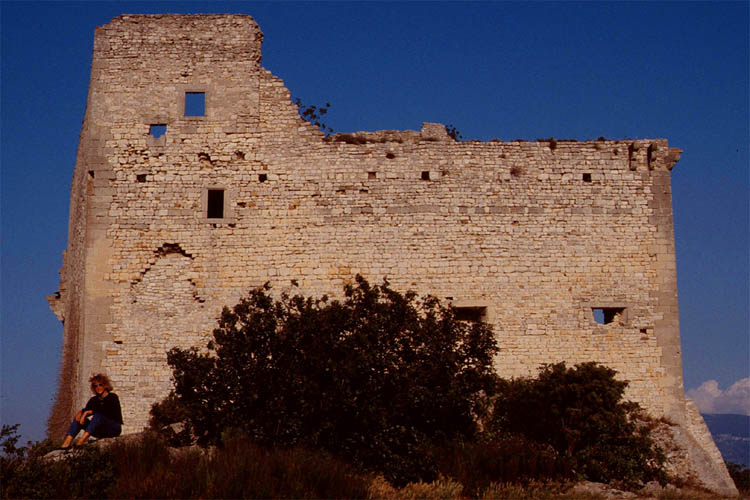
| with a long history
|
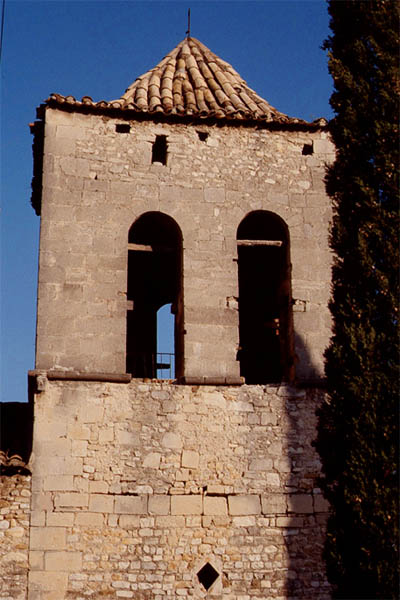
| Old church
|
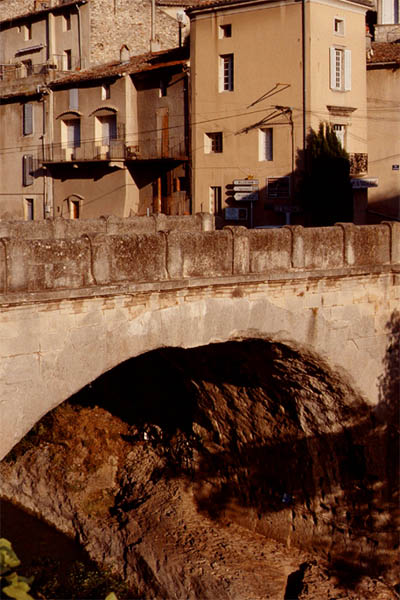
| Old bridge
|
From Mont Ventoux to Avignon
The destination of that detour was Mont Ventoux. With 1910 meters it was the highest mountain in the Provence.
From there we drove all the way down to the next bigger town: Avignon. It also has a long history and was the residence of the Pope in the 14th century.
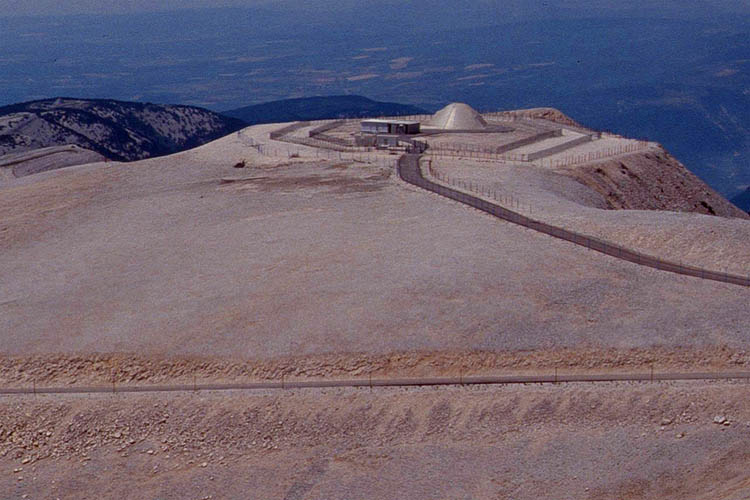
| Mont Ventoux with a futuristic construction
|
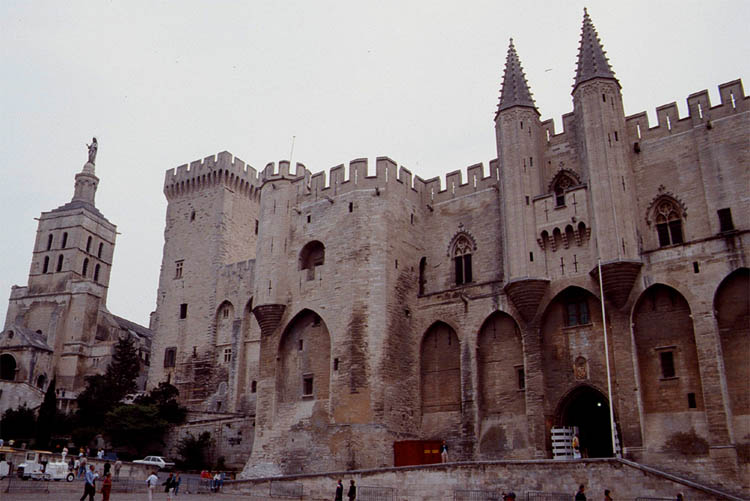
| Papal Palace, an old medieval construction
|
Interesting is also the Saint-Bénézet bridge, built in the 12th century. Of the original 22 arches only four are still standing, so did the Romanesque St. Nicolas Chapel in the middle. The bridge has become famous with the song "Sur le pont d'Avignon".
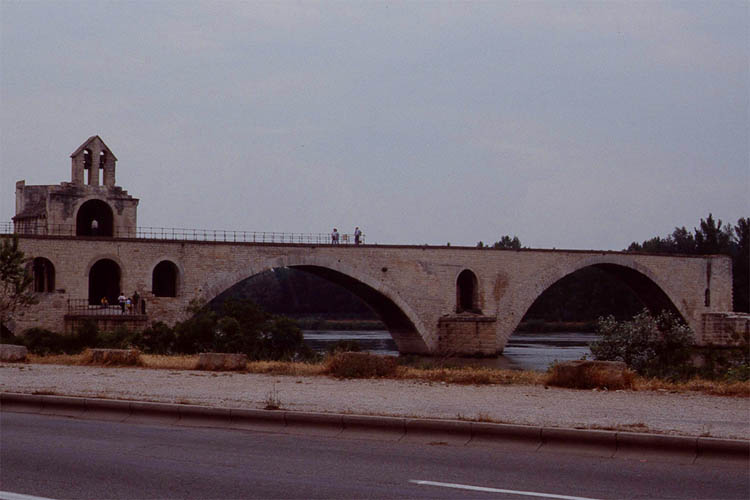
| "Sur le pont d'Avignon"
|
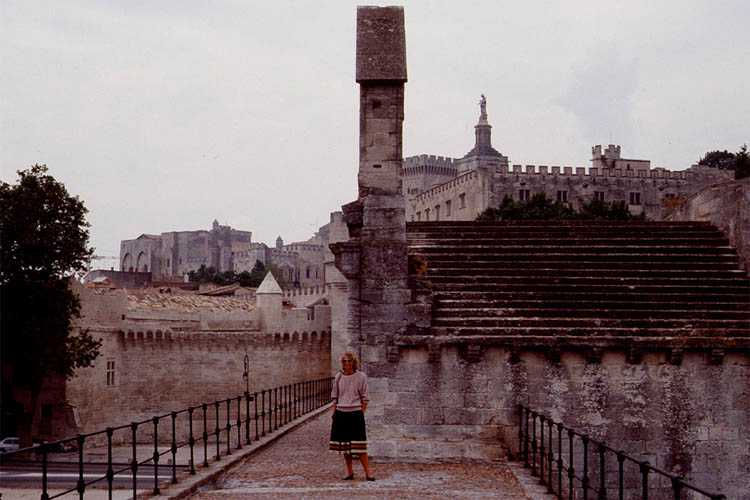
| Ville vieux d'Avignon
|
Pont du Gard
There is even a more famous bridge located just about 25km to the west from Avignon. It is even older than the "Sur le pont d'Avignon" bridge. It was built 2000 years ago and is still standing. Who and what was it built for?
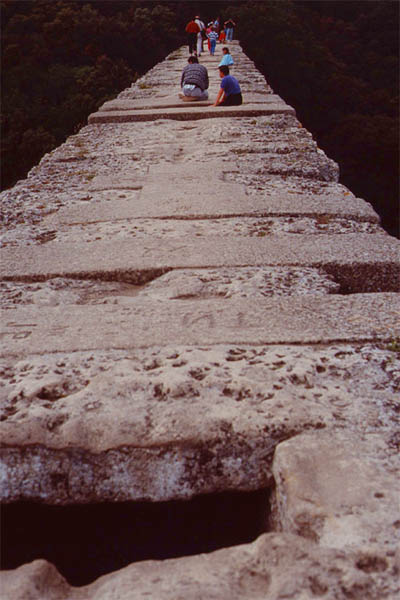
| Now walking on top
|

| of what?
|
It is a giant aqueduct built by the Romans to carry water to the city of Nîmes: Pont du Gard. Can you imagine: it rises up to a height of 47 meters and is constructed without any mortar only for the water.
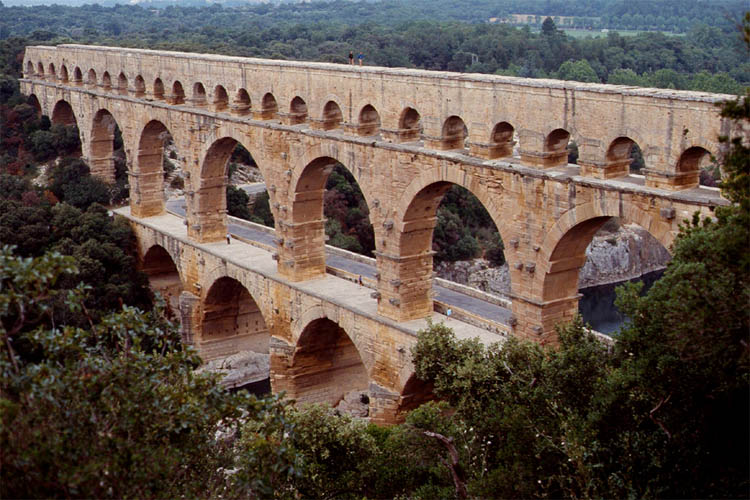
| Pont du Gard from the side
|
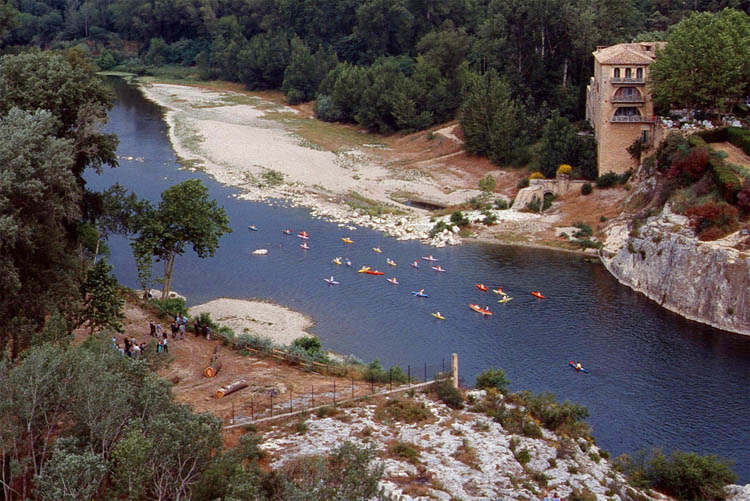
| Looking down to the river
|
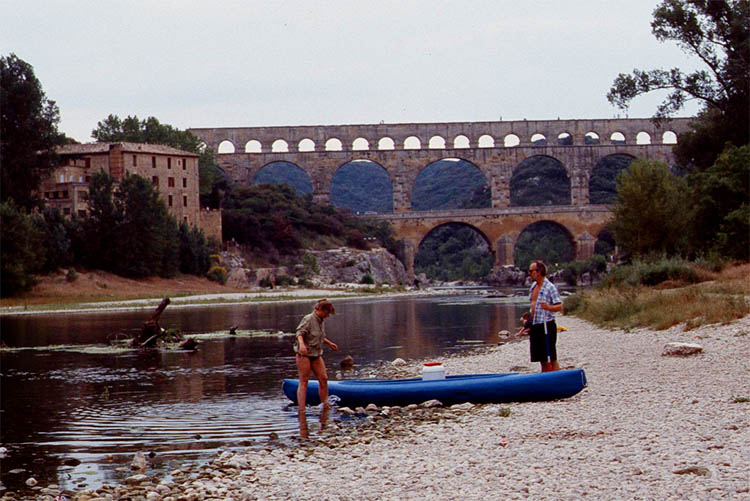
| Looking up to the bridge
|
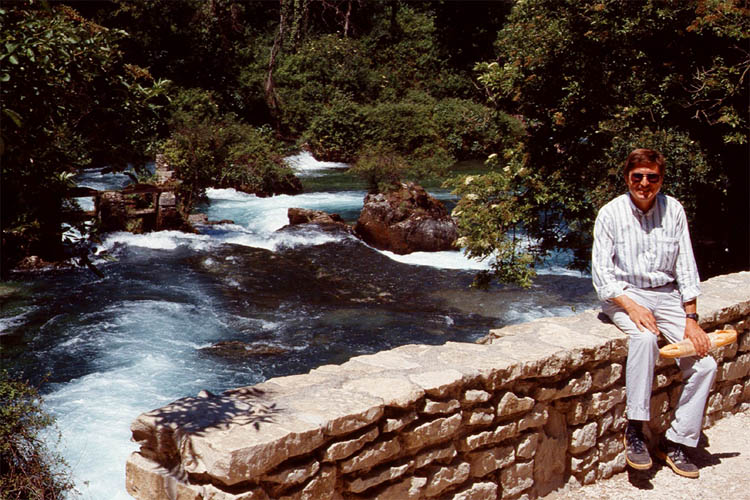
| Sitting on another bridge
|
Gordes
One of the most picturesque places is just around 35km east of Avignon: Gordes. It is also the town with the famous Vasarély pictures displayed in a little castle located on the top of the village.
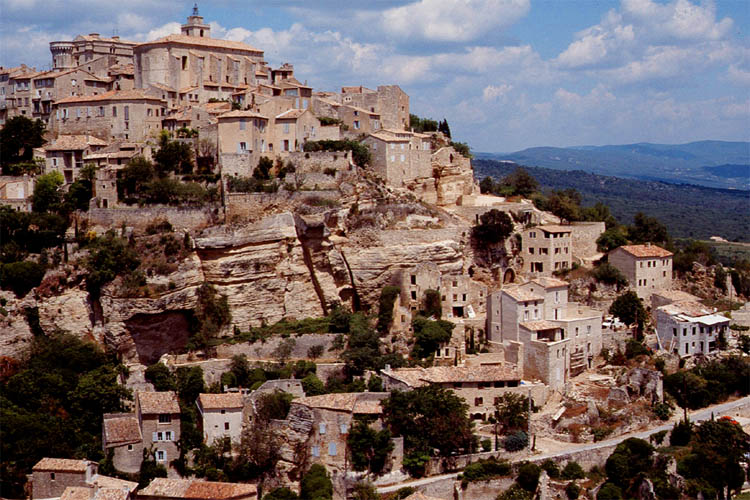
| The village Gordes
|
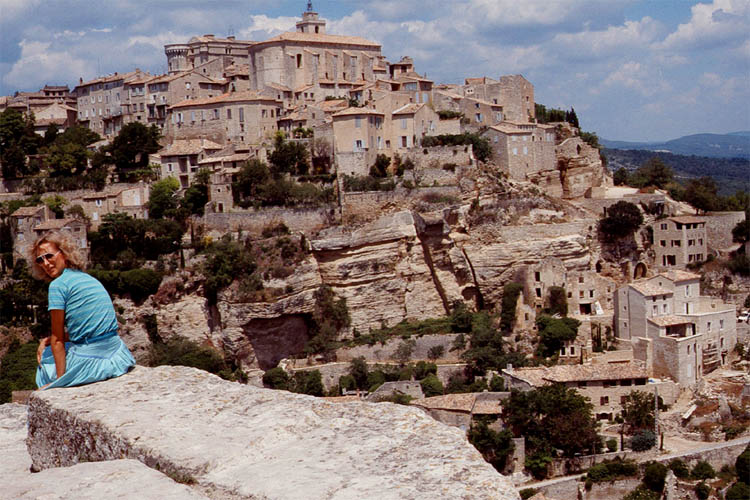
| Gorgeous view
|

| Yes, a real Vasarély
|
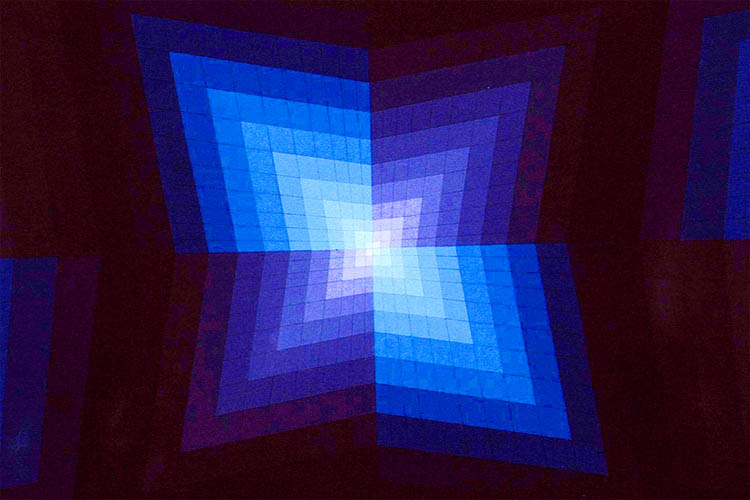
| Who has an exhibition here
|
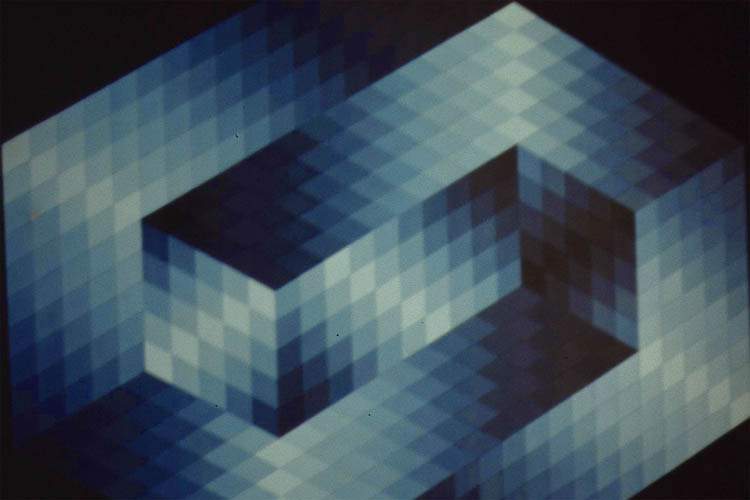
| He became famous
|
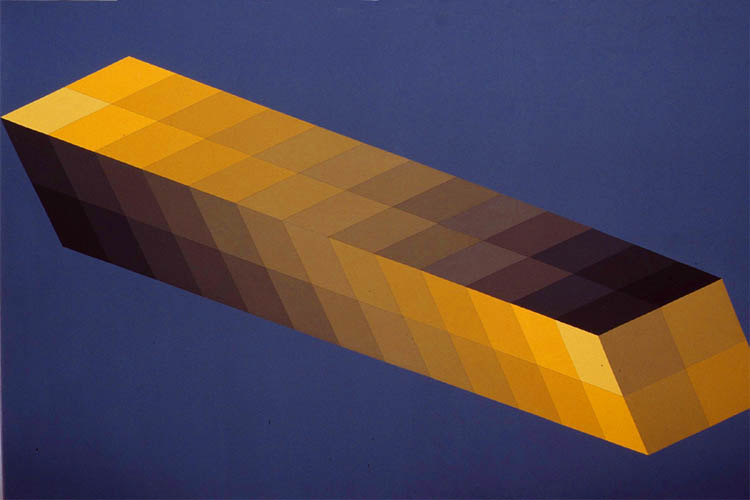
| all over the world
|
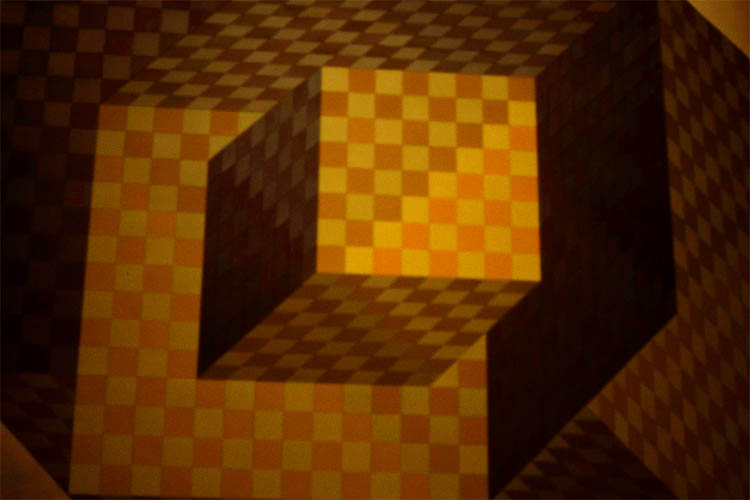
| There is also
|

| a museum in Aix
|
Abbey Senanque
Just a few kilometers north of Gordes is the Abbey Senanque, a Zisterzienser Abbey, built in a Romanesque and Gothic style around the 12th century. It is surrounded by lavender fields, though not in full bloom yet.
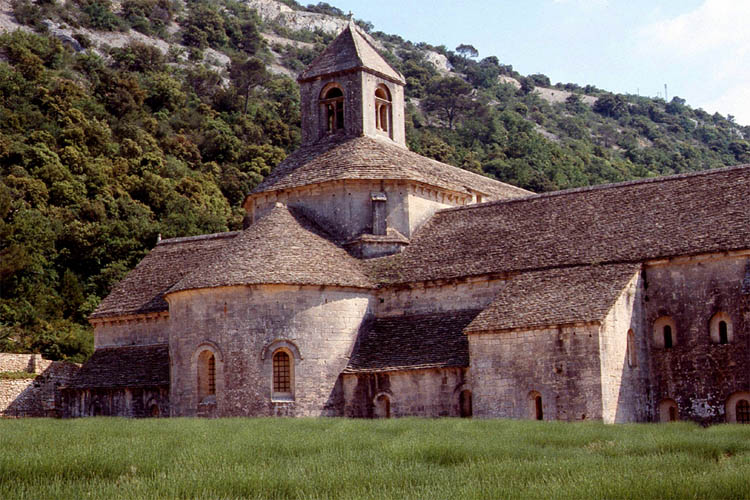
| The Abbey Senanque
|

| with a cross walk
|
Roussillon
Next stop was at the ocher rocks in Roussillon. Stone age men have used the color for their rock paintings already. Mining was mainly done in the Middle Ages. But not anymore. The chemical industry produces these colors synthetically now, otherwise this impressive landscape may have vanished.
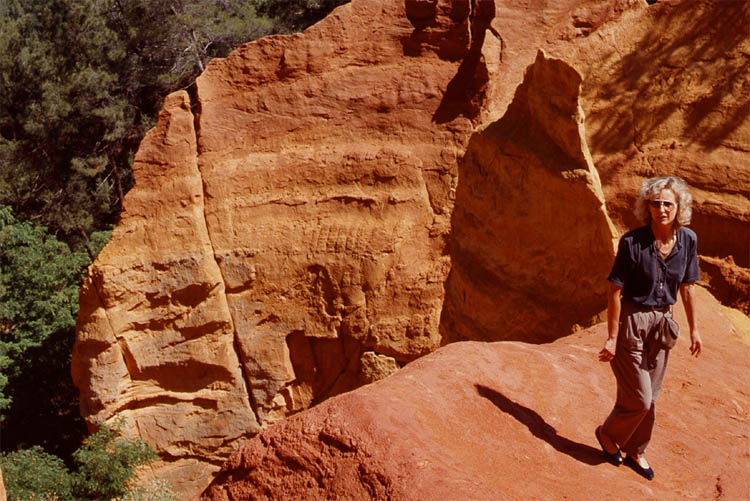
| In the middle of a red rock
|
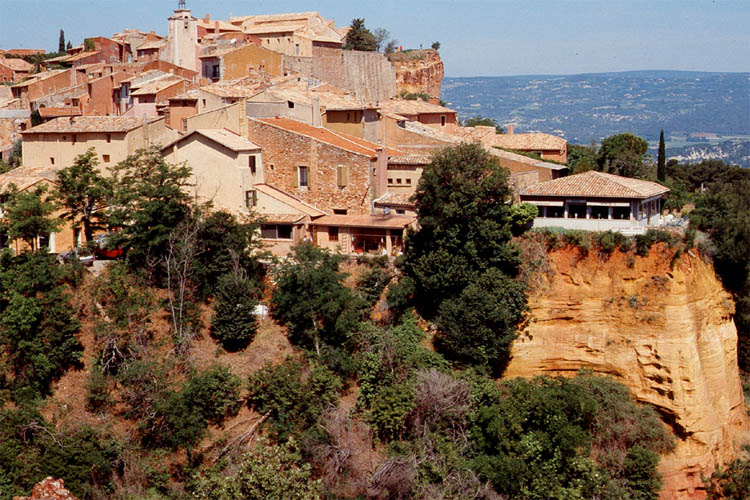
| Roussillon has been built on top
|
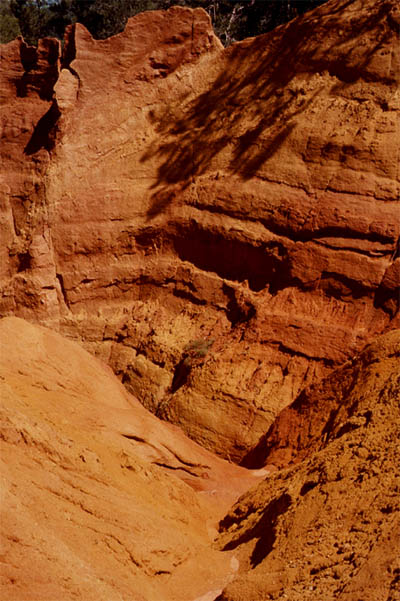
| It's red ocher
|
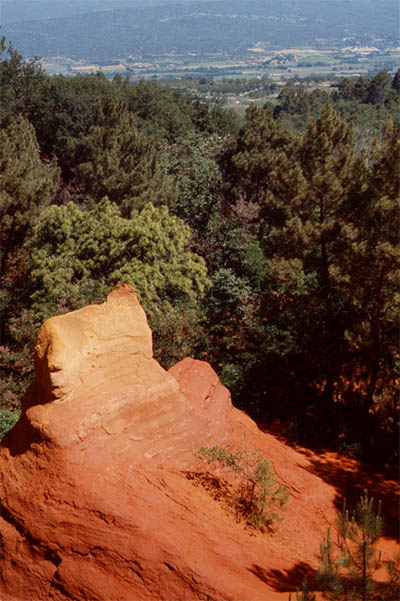
| lying all around
|
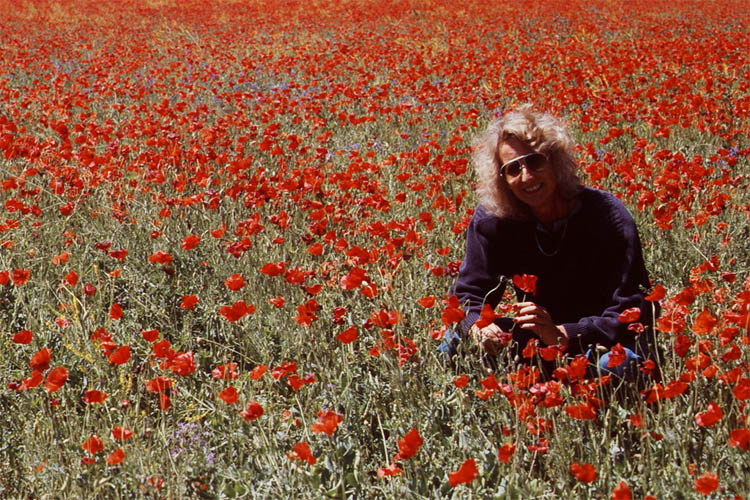
| So are red poppies
|
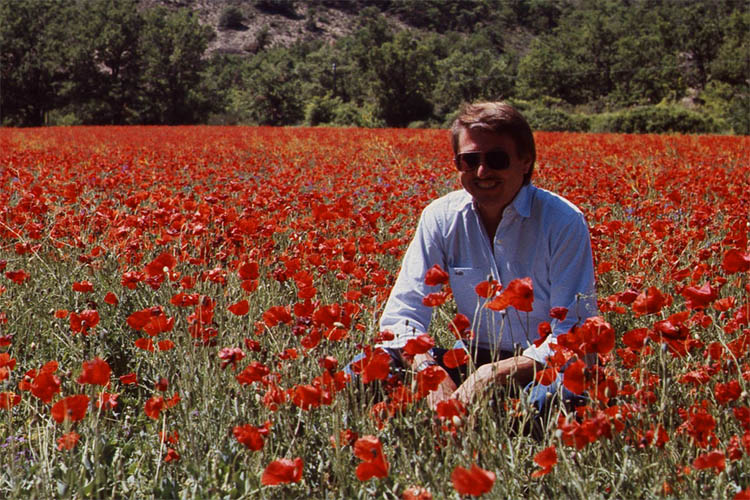
| growing abound
|
Saint-Remy-de-Provence
Next on the way down south we came to Saint-Remy-de-Provence. I don't remember much of that little town, because more interesting were the remnants of the old Roman town of Glanum close by.
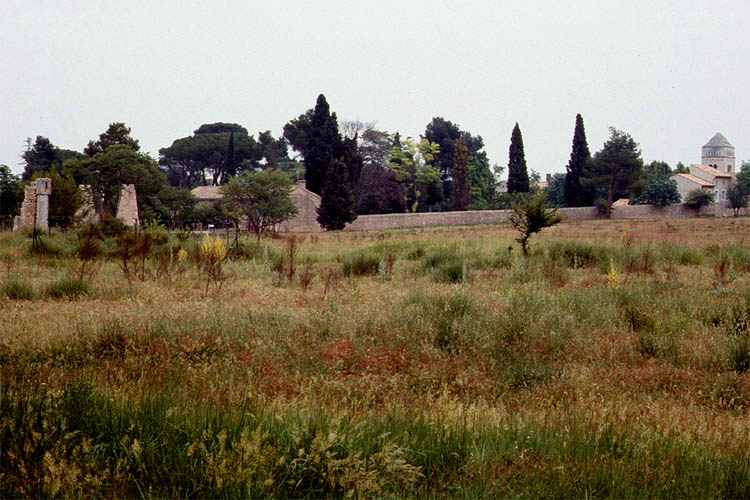
| What's behind the wall?
|
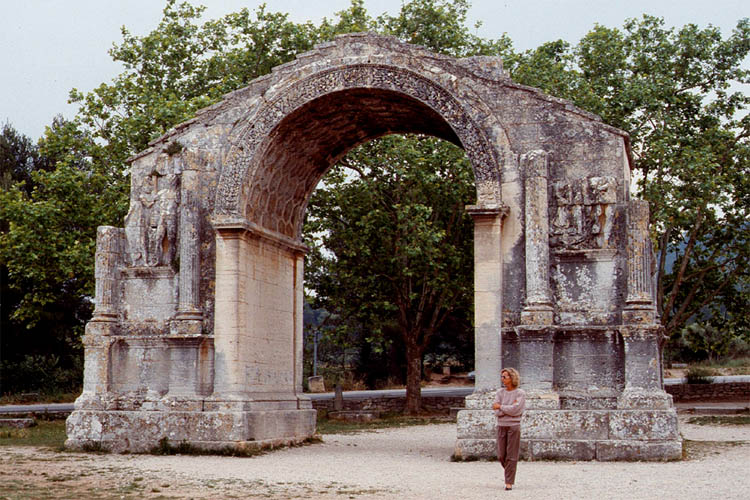
| What's behind the gate?
|
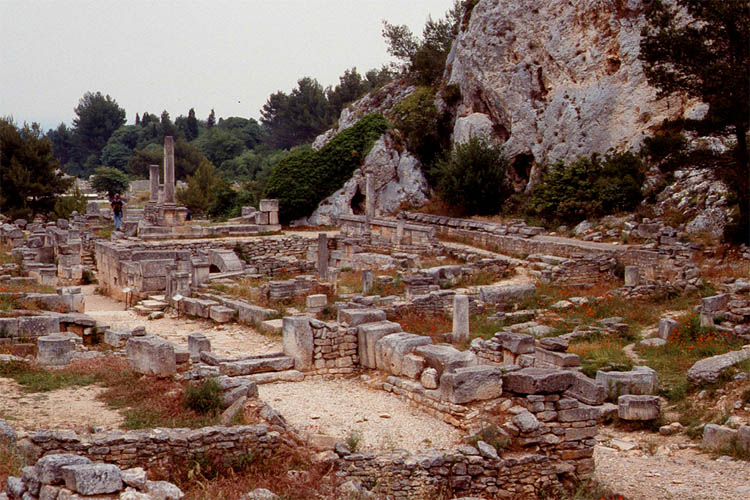
| An old Roman settlement
|

| A relief of an ugly war
|
Le Baux de Provence
It was only a short ride from the Roman town of Glanum to the medieval village of Le Baux de Provence but a time leap of at least a millennium. It looks impressive but not very inviting now. In the old days it was a fancy castle, full of live with lords, knights, troubadours and ladies.
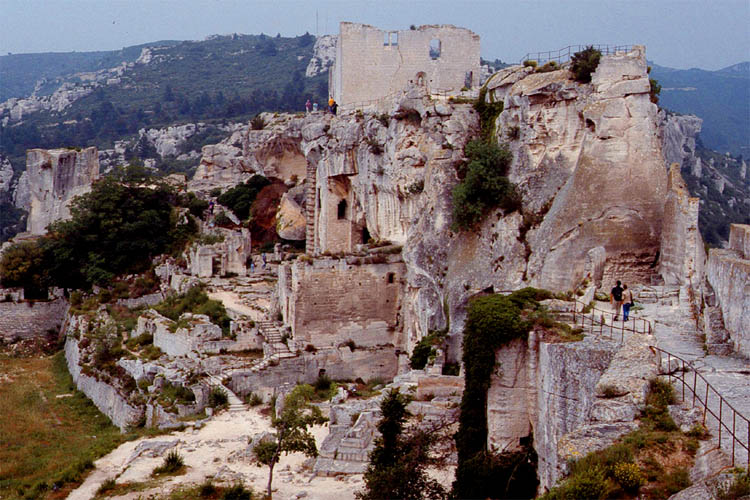
| It looks like a natural formation
|
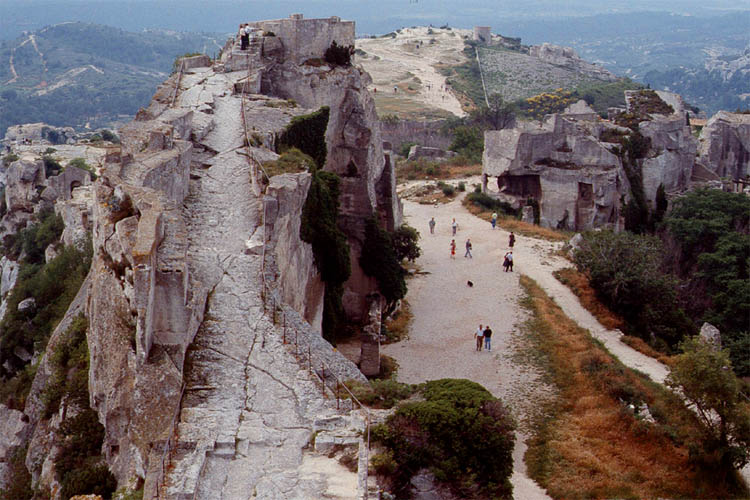
| But it is a rock fortification
|
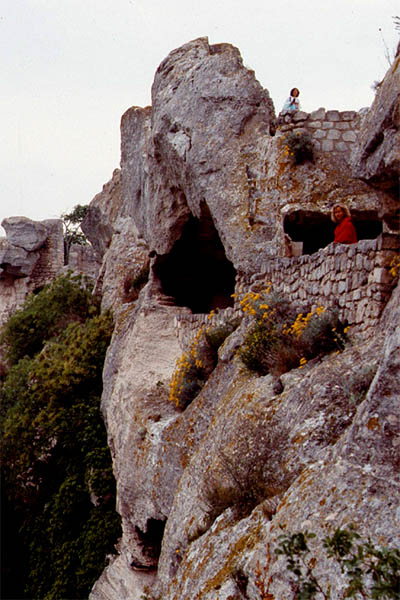
| People here didn't live in a cave
|
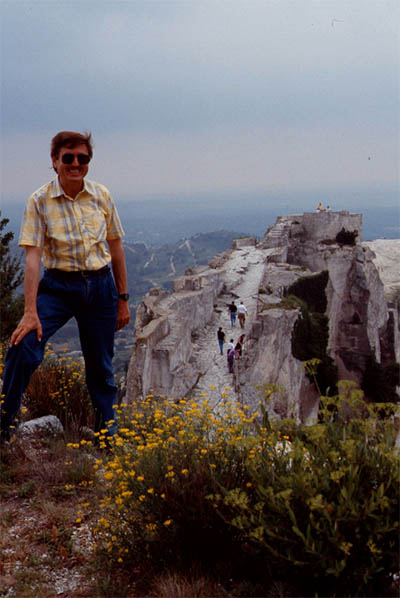
| They stood on top in the Middle Age
|
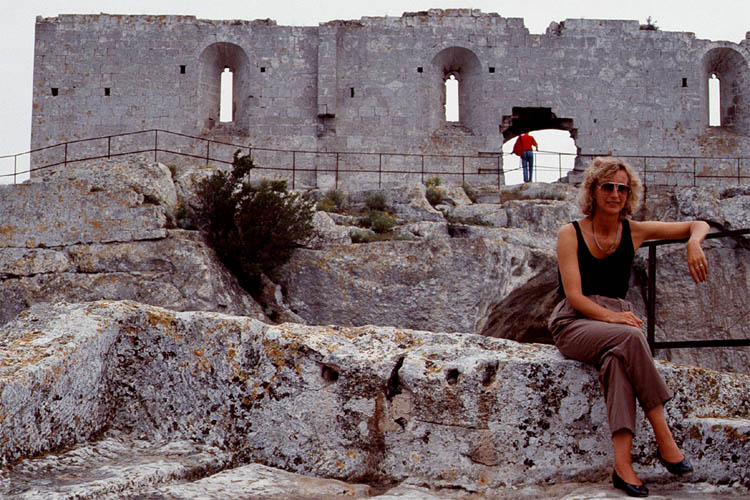
| Up here, sometimes it was hot
|
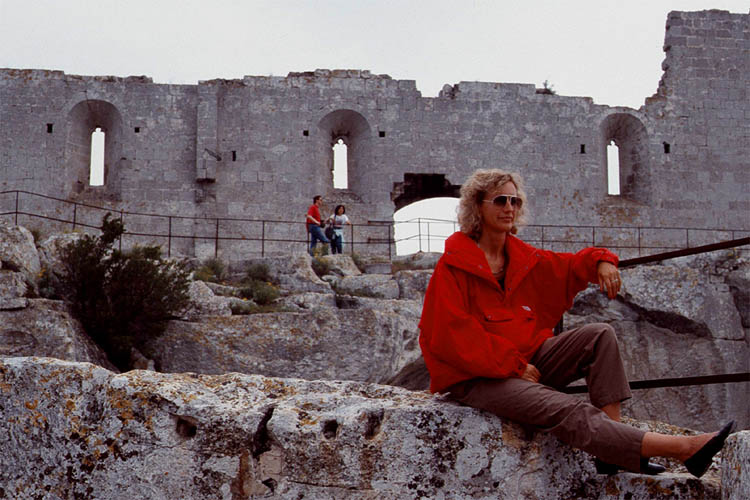
| And sometimes it was cold
|
Arles
Now we are on our way to Arles, just another 25km to the south-west. This old town also has a long history. It was a leading city of this Roman Provence. The Roman arena in the middle of the city is dated to the first century BC. It seated more than 20,000 spectators who watched the gladiators during that time. Today it is still used, but for bullfights and plays.
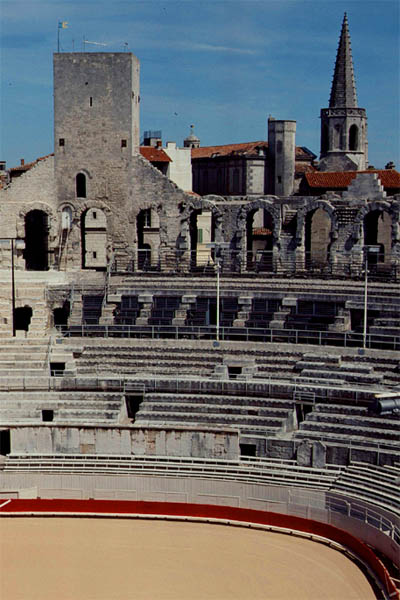
| In the middle of Arles
|
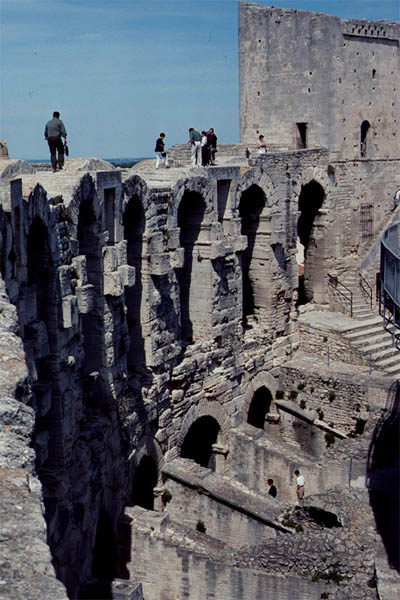
| A Roman arena
|
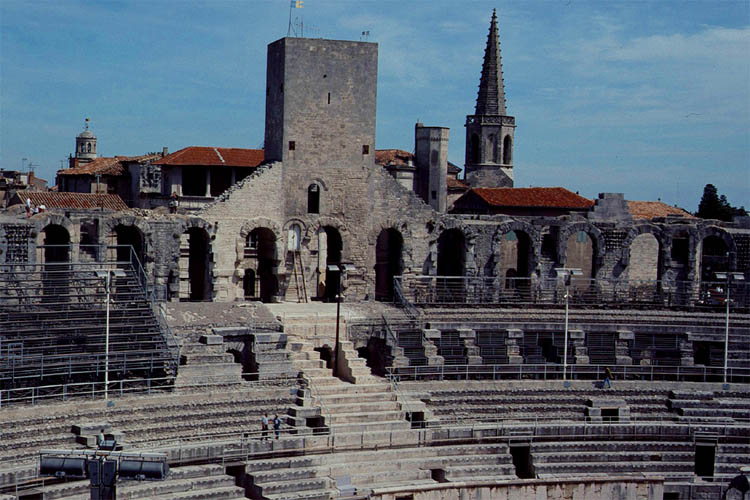
| What a construction built by the Romans
|

| in comparison to the ones of the Gauls
|
St. Gilles
From Arles we went down to the Camargue. Before, we must have passed through the town of St. Gilles where we saw a beautiful church. So it ought to be the Église de Saint Gilles.
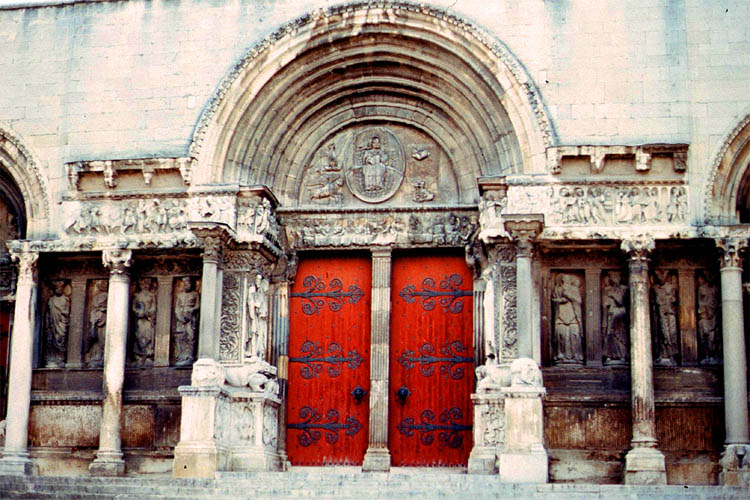
| Is this the gate into
|
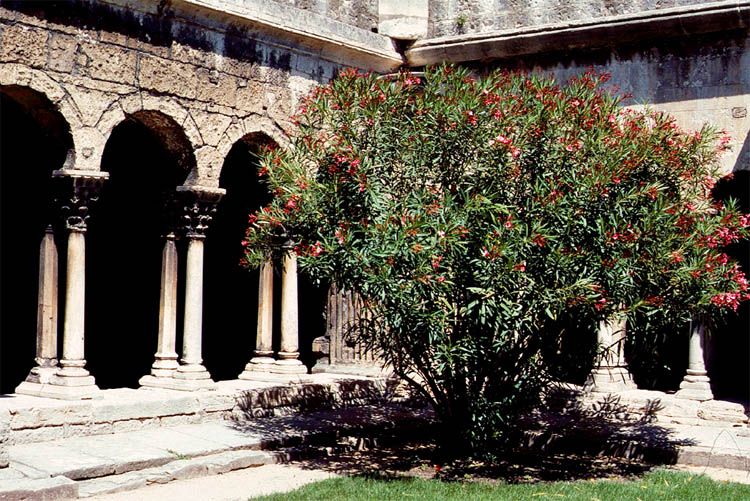
| the Église de Saint Gilles?
|
Saintes-Maries-de-la-Mer
Then finally we could see the sea at Saintes-Maries-de-la-Mer. A better view was even from the wall of the medieval fortress, built as a defense against marauding pirates and other potential conquerors from Europe. But now it is invaded by tourists from all over world.
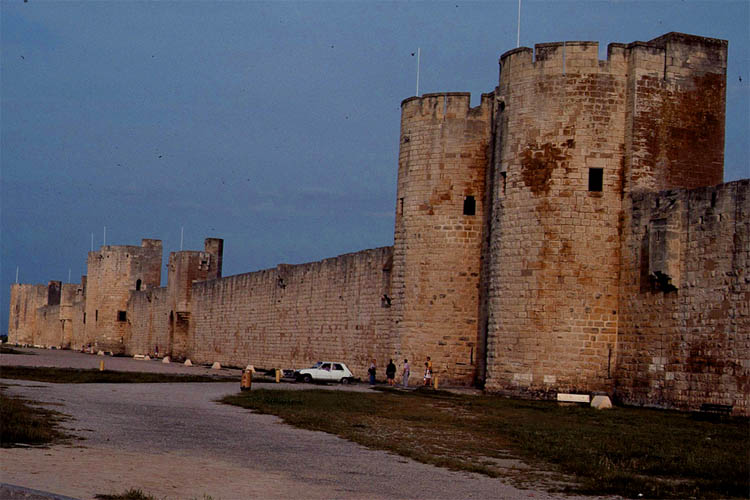
| Saintes-Maries-de-la-Mer
|
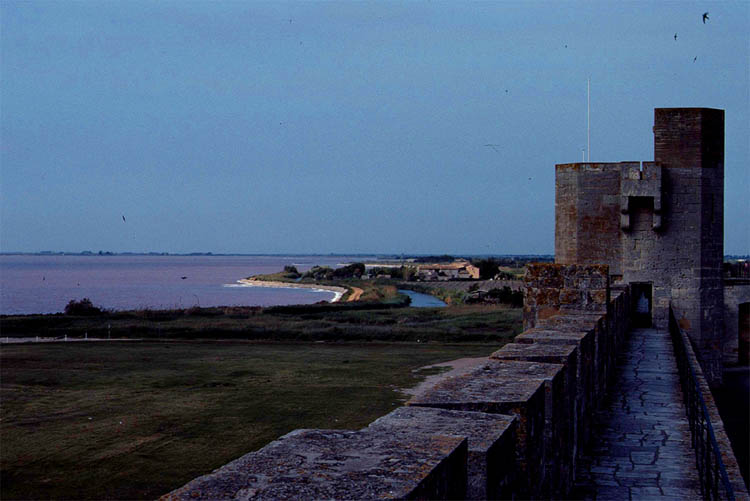
| a castle of the Middle Age
|
Marseille
It was a long drive through the Camargue to get to Marseille. We fled the bustling city and booked a boat excursion to the more quiet island "If" with the "Chateau d'If". A very famous, but fictitious, figure actually fled from there, when it was a prison. He was the Count of Monte Christo, protagonist in the novel of the same name of Alexandre Dumas.
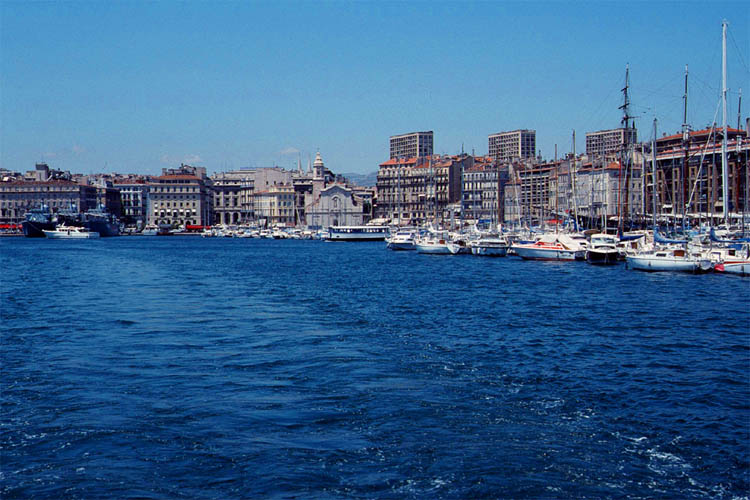
| From Marseille
|
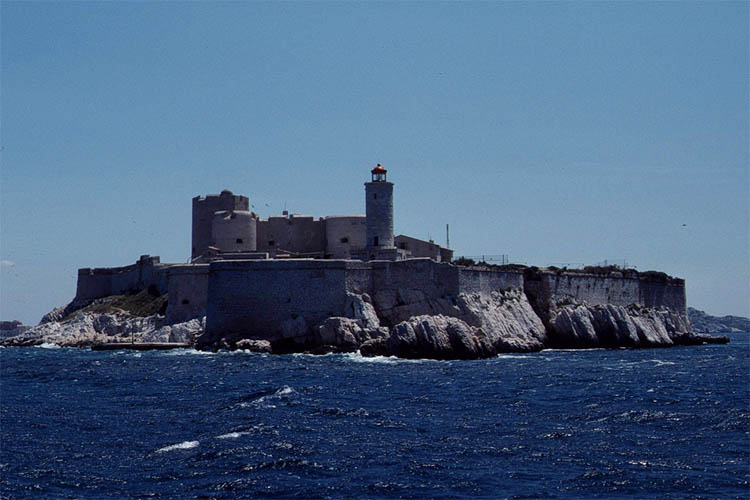
| to Isle d'If
|
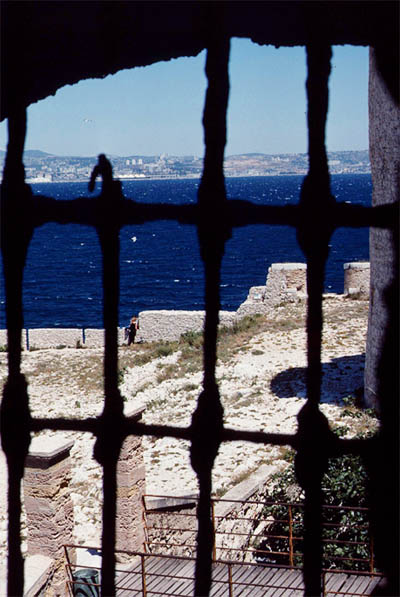
| The prison cell of the Count of Monte Christo?
|
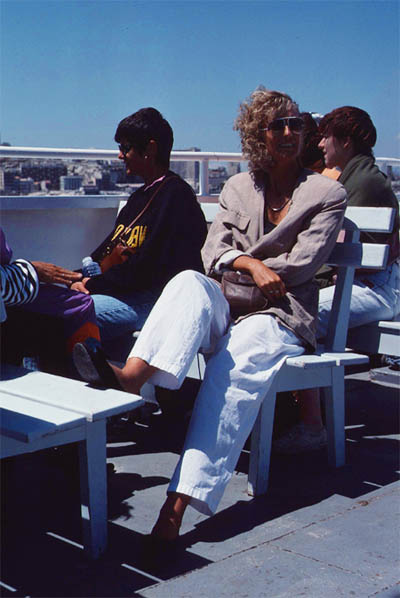
| It's not a prison anymore but a tourist attraction
|
Cassis
And finally we wanted to see some beaches, even if we didn't intend to sunbathe or to swim. The closest we could get at that was via a little fishing village just a few miles from Marseille to the east: Cassis. However, that fishing village has become a prime tourist spot with many hotels, restaurants and cafés. Ok, there are some fishing boats around but more so yachts of all sizes. A must was to embark on a ship cruise along the picturesque coast interspersed with white sandy beaches.

| Yes, this is Cassis
|
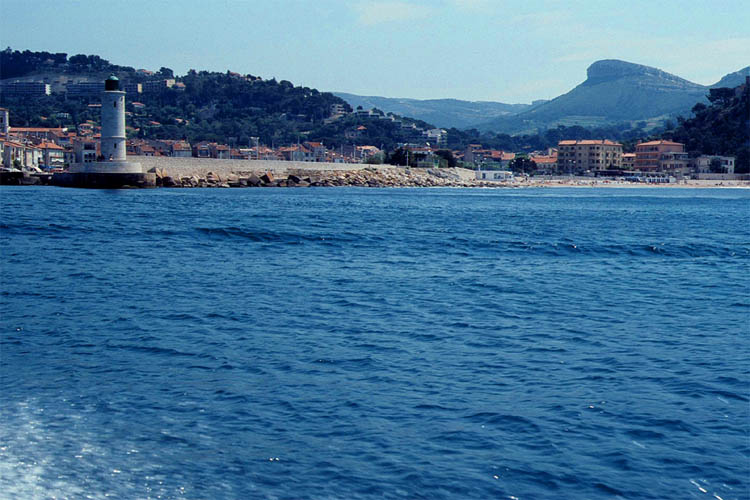
| Cruising the sea
|
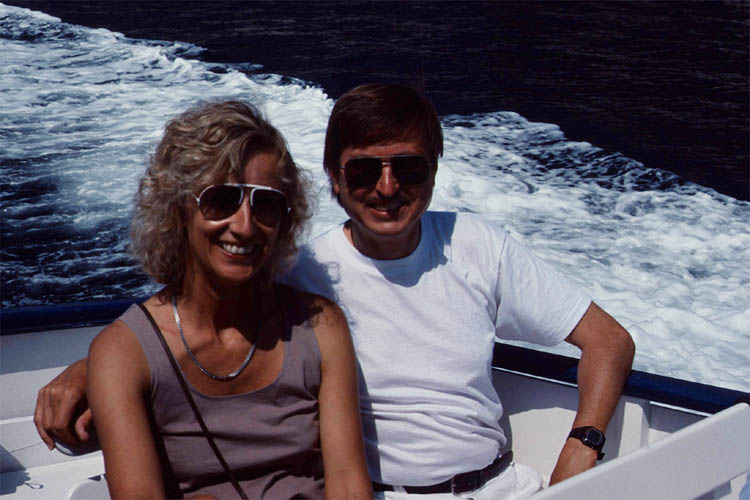
| Along the coast
|
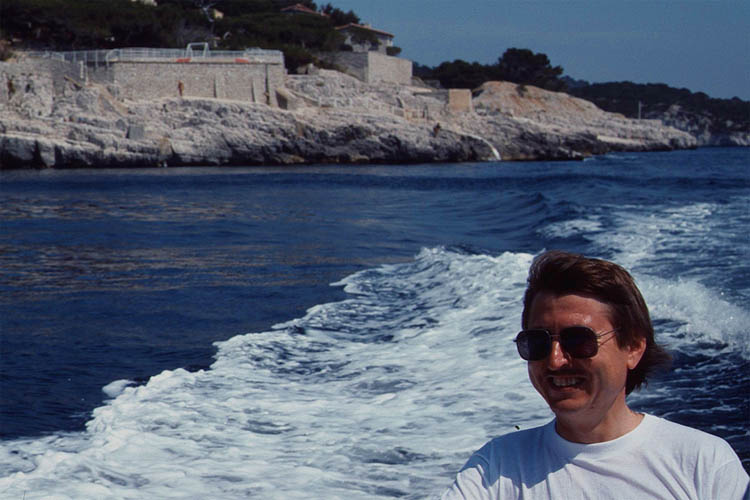
| with full speed
|
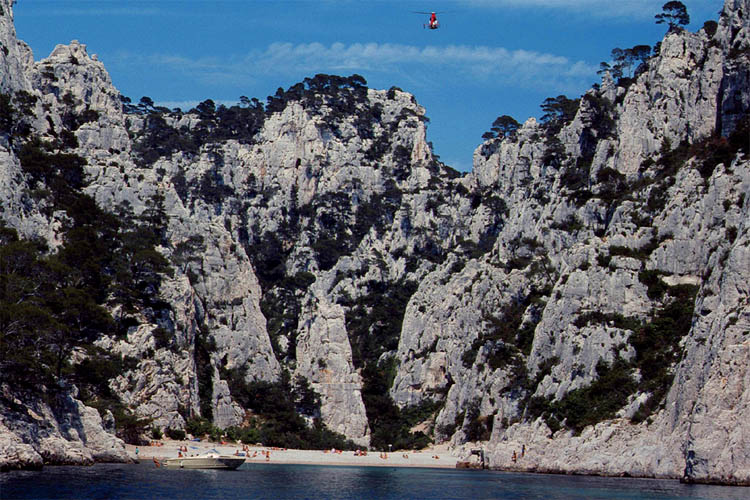
| A beautiful coast
|
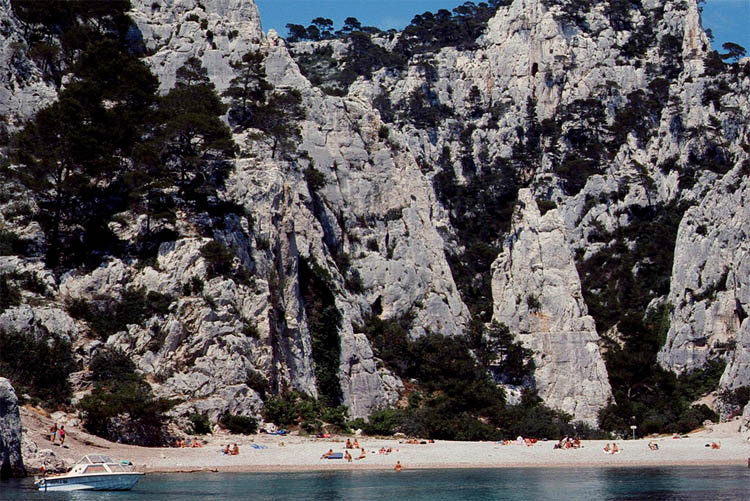
| with a nice beach
|
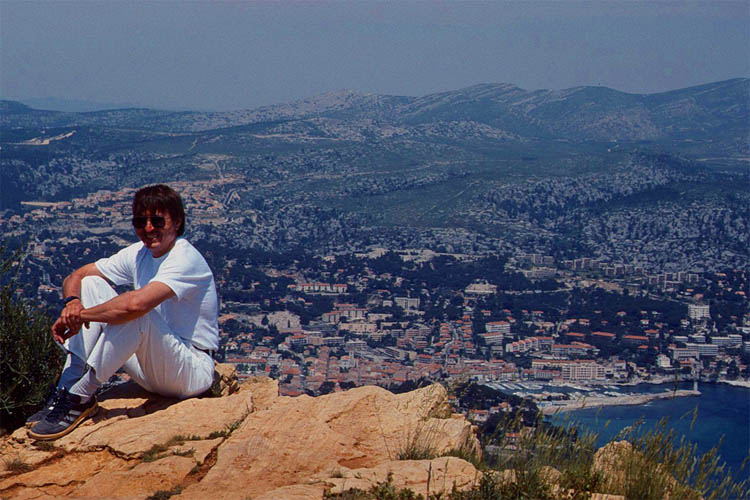
| Instead of lying on the beach
|
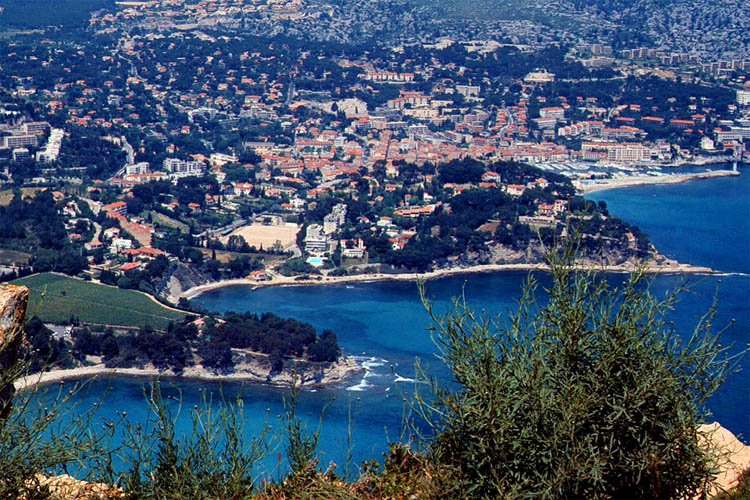
| better climbing the rock above Cassis
|
From the Sea to the Alpes-de-Haute-Provence
From Cassis we went to Aix-en-Provence, where we visited the Vaserély Fondation in a building designed by him. Next morning we finally left the Provence and drove up into Alpes-de-Haute-Provence. One of the final highlights was visiting part of the Gorge du Verdon, before we were heading home.
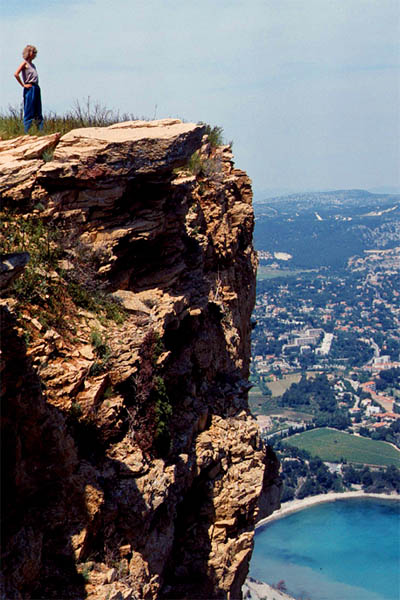
| From the rock above the sea
|
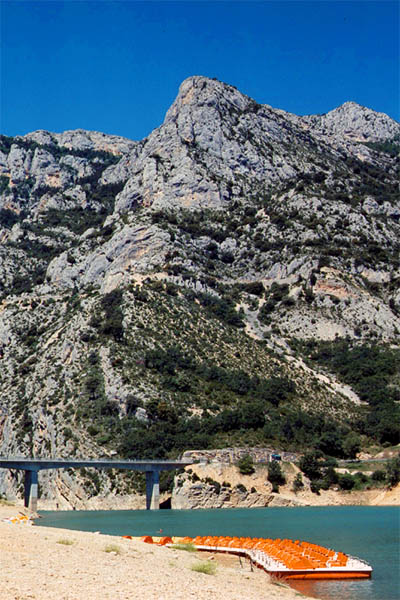
| to a lake in the mountains
|
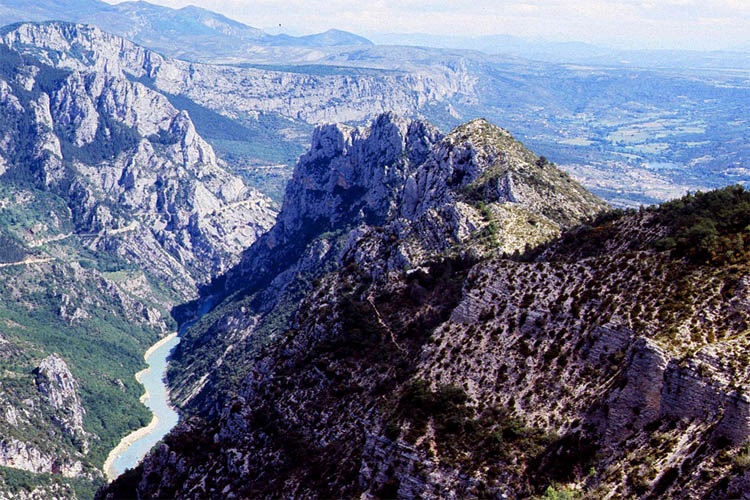
| Looking down from un mont
|
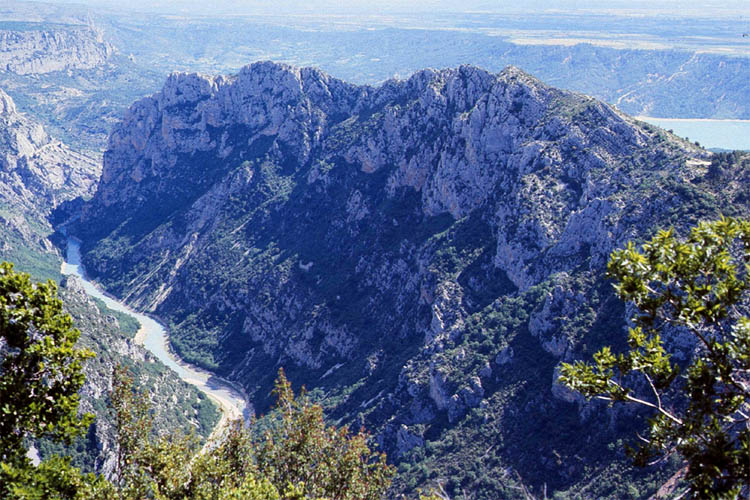
| into the Gorge du Verdon
|
Ok, that was the Provence in France, though only a very small part of it. I could have seen and done a lot more. Also I could have written more. If you want to know more all about the places I have visited, then just look up any of the many guidebooks or in the internet.
| 




















































































